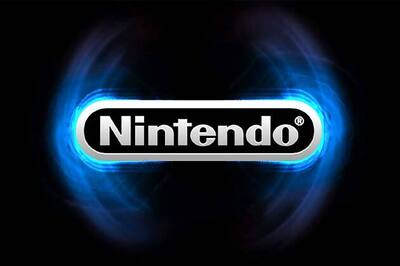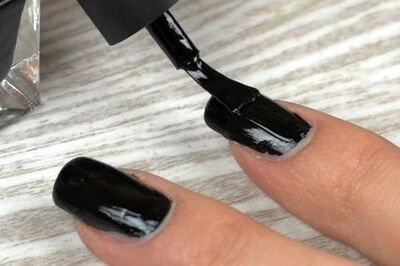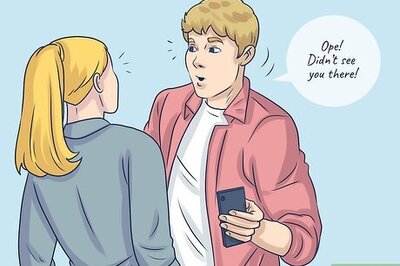
views
What is a villain origin story?
A villain origin story is a narrative that explains why a character becomes a villain. A villain origin story is typically a prequel to an existing movie, TV show, book, or other piece of media that follows the villain’s early life. It explores the circumstances, events, and experiences that transform the character from an ordinary person into a villain. Villain origin stories explain the “how” and “why” behind a villain’s actions, giving viewers or readers a better understanding of their motivations. These stories often add depth to villains, making them more complex and relatable, even if they are ultimately evil.
The Villain Origin Story Meme
Internet users explain what would turn them into a villain. The phrase “villain origin story” has become a popular meme on sites like TikTok, Reddit, and Instagram, as users comically describe different events that would make them turn evil. These are usually small, humorous events that people find annoying, like stepping on a Lego or hearing an obnoxious song on repeat while working retail. For example, one might say, “Trying and failing to get Eras Tour tickets is my villain origin story.” Or, “My villain origin story is that I’m the eldest daughter.” There isn’t a specific meme format, but many users post TikTok videos of embarrassing moments from their lives or make funny Tweets using the phrase.
Popular Villain Origin Stories
President Snow in The Ballad of Songbirds and Snakes Suzanne Collins’s Hunger Games prequel follows a young Coriolanus Snow, who eventually becomes the dictator-like President Snow in the original trilogy. The book (and movie) follows Snow as he leads District 12 tribute Lucy Gray Baird to victory in the 10th Hunger Games. He eventually falls in love with her, but his dark streak threatens their relationship and their safety. Why it’s good: Snow starts out as an ambitious person with a rule-breaking streak and slowly becomes more cold and bitter. We also learn that his past with District 12 goes much further back than Katniss Everdeen.
Vito Corleone in The Godfather Part II The Godfather Part II chronicles the infamous Mafia don Vito Corleone’s early days in Sicily and his journey to New York City, where he becomes involved with the underground crime world and creates his mafia empire. Fans argue about whether Corleone is just a ruthless villain or a pseudo-Robin Hood who looks out for those closest to him. Why it’s good: Many claim that The Godfather Part II is the greatest sequel of all time. The film gives viewers a more nuanced appreciation for the crime boss and his compelling rise to power.
Arthur Fleck in Joker This 2019 psychological thriller follows Arthur Fleck (Joaquin Phoenix), a clown and aspiring comedian who suffers from a condition that makes him experience uncontrollable bouts of laughter. After being regularly mocked and beaten, Fleck takes matters into his own hands and kills two men, which causes his mental state to continue to deteriorate. Why it’s good: Joker depicts a character whose villainy stems from the mistreatment and abuse he has faced, and Phoenix expertly portrays all the anger, confusion, and neglect Fleck feels.
Magneto in X-Men: First Class X-Men: First Class (2011) is a prequel to the popular X-Men series, focusing on the group’s formation and the complicated relationship between a young Charles Xavier and his frenemy Erik Lehnsherr, who becomes the supervillain Magneto by the end of the film. Why it’s good: X-Men: First Class makes Magneto even more of a complex and interesting supervillain than he’s portrayed in the comics and original film series. It’s easy for viewers to understand his way of thinking.
Darth Vader in Star Wars: Episode III – Revenge of the Sith Darth Vader is one of the most iconic villains in movie history, and the Star Wars prequel series culminates with Revenge of the Sith, in which Anakin Skywalker takes his final steps toward the dark side. Anakin joins Supreme Chancellor Palpatine and becomes Darth Vader in an attempt to prevent his lover, Padme, from dying in childbirth. Why it’s good: Though the Star Wars prequels have gotten a bad rap over the years, Revenge of the Sith handles its depiction of Anakin’s turn to the dark side in a convincing and rewarding manner.
Cruella de Vil in Cruella Cruella (2021) is a crime comedy that follows a young Cruella de Vil (Emma Stone) as she attempts to take London’s fashion industry by storm and goes head-to-head with narcissistic haute couture designer, The Baroness (Emma Thompson). Viewers also learn why Cruella becomes so obsessed with Dalmatian fur. Why it’s good: Cruella offers a fresh and insightful glimpse into its titular character’s early years, with Stone giving an unhinged, yet emotional performance.
Jigsaw in Saw IV The horror movie Saw IV is an origin story for the other Saw films and explains why John Kramer (the original Jigsaw) is so determined to enact his torturous vengeance on others. Viewers get a look inside his mind to discover his motivations. Why it’s good: Viewers discover that Kramer’s life is filled with misfortune and tragedy due to his wife’s miscarriage and his cancer diagnosis.
The Wicked Witch of the West in Oz the Great and Powerful 2013’s Oz the Great and Powerful follows con artist and magician Oscar Diggs (James Franco) as he arrives in the magical land of Oz and becomes entangled in a battle between three witch sisters, Theodora, Glinda, and Evanora. Through tragic manipulation, Theodora (Mila Kunis) ultimately becomes the Wicked Witch of the West. Why it’s good: Mila Kunis expertly conveys Theodora’s manipulative streak and growing wickedness while maintaining a strong sense of charm.
Maleficent in Maleficent In 2014’s Maleficent, Angelina Jolie portrays the titular antagonist throughout her life leading up to the events of Disney’s Sleeping Beauty. We see the fairy Maleficent fall in love with a human named Stefan, who betrays her by cutting off her wings. Over time, she grows angry and vengeful and ends up cursing Stefan’s daughter, Aurora, to fall into an eternal sleep when she pricks her finger on a spinning wheel on her 16th birthday. Why it’s good: By showing the events of Sleeping Beauty from the villain’s point of view, Maleficent becomes one of the most sympathetic Disney villains.
The Minions in Minions: The Rise of Gru Not all villain origin stories have to be dark and serious. Minions: The Rise of Gru depicts the comical villain’s childhood as he attempts to become the world’s most feared supervillain. The movie follows Gru’s journey as he learns to embrace his inner bad side. Why it’s good: Minions: The Rise of Gru is a fun movie for the whole family. Young Gru is comically bad at being the villain, and viewers get to see how he ended up being the character we all love in Despicable Me.
How to Create a Villain Origin Story
Explore their life before they became a villain. Villain origin stories are usually prequels that explain how the villain became the villain. They often depict the villain in their youth, so think about what your character’s life was like during their childhood and young adult years. What was their personality like? What about their family? Consider what could have happened that led them to make the decisions they did. For example, maybe your villain was abandoned at a young age, causing them to have trust issues.
Balance the good and the bad. Even though your character eventually becomes a villain, they likely didn’t start out that way. When depicting their origin story, don’t make them evil from the get-go. Give them positive traits alongside their flaws. Show them as a real person capable of doing good and bad things so your readers or viewers can understand (or even sympathize with) their decisions. Humanizing your villain will also prevent them from becoming a one-dimensional character.
Give them a catalyzing event. While there are probably a lot of things that influenced your villain’s decisions, most villain origin stories depict one major event that caused them to go bad. Determine what this event or moment is to give your character a fully fleshed-out backstory. For example, maybe your character was betrayed by their best friend. That friend may then go on to become a hero, and the villain wants to be their downfall.
Similar Slang Terms
Villain Era According to social media sites like TikTok and Instagram, a villain era is when someone decides to prioritize themselves, even if other people don’t like it. Those in their villain era may set strict boundaries, stop people pleasing, and learn to ask for what they want.
Main Character Energy Main Character Energy (or MCE) is a TikTok slang term that refers to someone who lives their life as if they’re the main character of a TV show, book, or movie. People with MCE often romanticize and find joy in the little things, and they seem to have a strong sense of self and know where they’re headed with life.
My Roman Empire The “My Roman Empire” TikTok trend comes from the theory that men think about the Roman Empire every day. In turn, users began referring to things they think about often as their “Roman Empire.” A “Roman Empire” can be anything from a significant memory or life event to a scene in a movie.


















Comments
0 comment